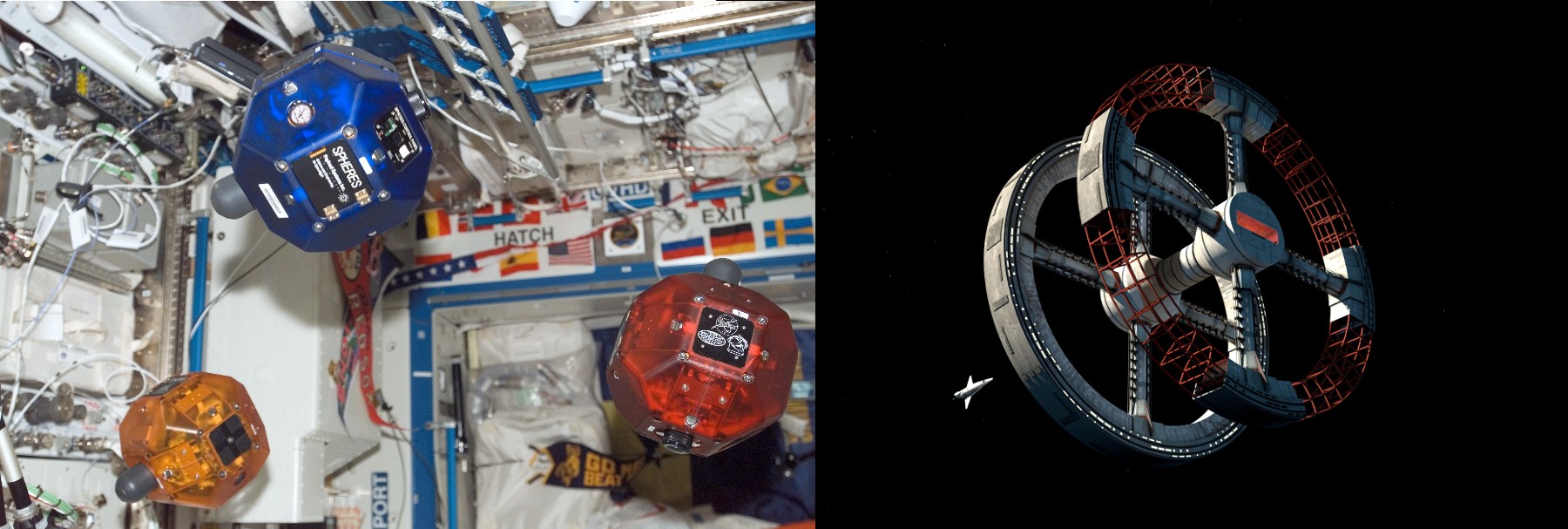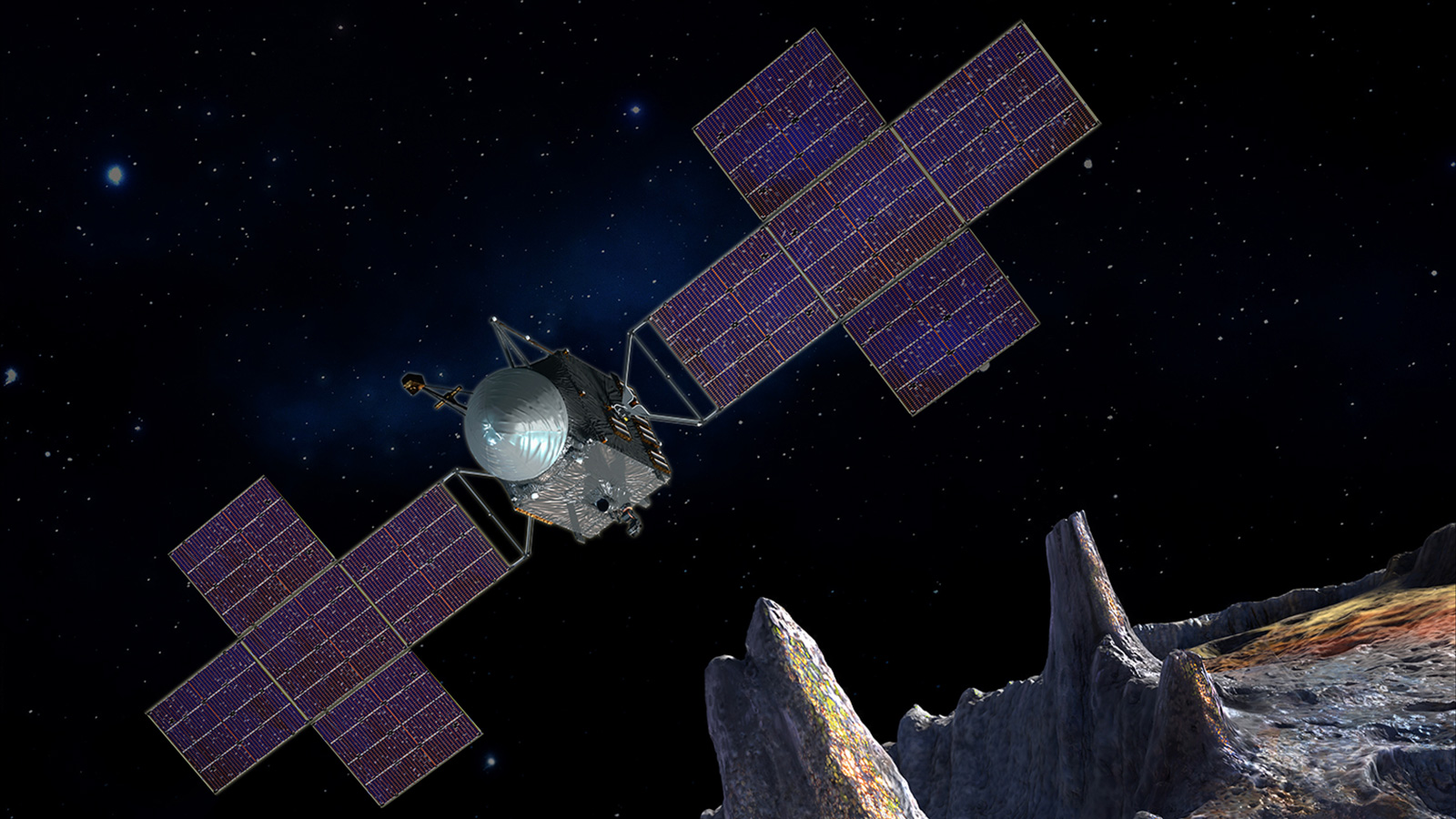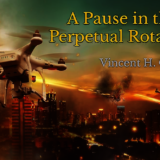 In this fourth round of testing the “future telling” of Star Trek, I have to stretch a bit (ok, a lot) to find the “progeny” of International Space Station technology in the science fiction universe (unless I invoke a different SF classic or two). Let’s start with a Trek prediction that didn’t do too badly compared to what we can do today: the Enterprise Transporter.
In this fourth round of testing the “future telling” of Star Trek, I have to stretch a bit (ok, a lot) to find the “progeny” of International Space Station technology in the science fiction universe (unless I invoke a different SF classic or two). Let’s start with a Trek prediction that didn’t do too badly compared to what we can do today: the Enterprise Transporter.
As envisioned by the original series, a transporter converts (dematerializes) a person or object into a pattern of energy, transmits (beams) it to a location, and there reconverts (rematerializes) it into the original. Other than a recurring complaint by Doctor McCoy about losing his soul in the thing (“Crazy way to travel, spreading a man’s molecules all over the universe”), that was about it for explaining the technology behind it.
In the later show, Star Trek: Enterprise, set 115 years before the events in the original series, Jonathan Archer and his crew have sufficient concerns about the transporter’s hazards that they use it mainly to beam objects, not living organisms.
 In our own timeline, NASA and the Made In Space Company have developed an ISS-based 3D printer specifically designed and delivered for use on the ISS. A practical demonstration occurred in December of last year when a digital design file for a ratchet wrench was transmitted from the ground to the Space Station and the wrench was successfully printed on board.
In our own timeline, NASA and the Made In Space Company have developed an ISS-based 3D printer specifically designed and delivered for use on the ISS. A practical demonstration occurred in December of last year when a digital design file for a ratchet wrench was transmitted from the ground to the Space Station and the wrench was successfully printed on board.
This is admittedly a first step, but a very important one, in transforming the way scientific and technology research can be done in space, and in supplying tools and other necessities to the ISS or other spacecraft on distant exploration missions. And if you think about it, it actually operates pretty much along the lines of Enterprise’s Transporter. Can “beaming up” living things be coming next? Yes they can! More on that in a later blog.
Next. Beginning with Star Trek: The Next Generation, a revolutionary new type of onboard computer was introduced to the Starship Enterprise. Mr. Data was a sentient, human-like android who even graduated from Star Fleet Academy and served as chief operations officer under Captain Picard.
 While no being quite so sophisticated has yet been developed in our time, General Motors and NASA have developed a humanoid-appearing crew member named Robonaut that’s designed to support human crew member operations in space.
While no being quite so sophisticated has yet been developed in our time, General Motors and NASA have developed a humanoid-appearing crew member named Robonaut that’s designed to support human crew member operations in space.
Robonaut’s upper torso and arms were delivered to the International Space Station in 2011 and it has since acquired a set of legs that allows it to move about the ISS interior spaces a bit. NASA describes Robonaut as a “two-armed humanoid robot torso designed with the versatility and dexterity to manipulate hardware, work in high risk environments, and respond safely to unexpected obstacles”. Sounds a little like Mr. Data, doesn’t it?
Well, maybe Robonaut “DNA” informs some of Mr. Data’s primitive ancestry, but this is where my Star Trek analogies begin to break down. To find a more likely descendant of this particular creature, I’m switching to the future (or long, long ago, I guess) universe of Star Wars. Put Robonaut side-by-side with C3PO and you can really see where his genes are heading.
 Finally, let’s talk about those furry and adorable Star Trek creatures – Tribbles. In the original series episode “The Trouble with Tribbles”, these were non-sentient alien lifeforms with an extraordinary rate of reproduction. They were shaped like small squishy balls covered with soft fur, and their cooing sounds would immediately sooth any human who touched them. Left on its own, a single tribble would produce a litter of ten every twelve hours, a problem for even the largest of space ships.
Finally, let’s talk about those furry and adorable Star Trek creatures – Tribbles. In the original series episode “The Trouble with Tribbles”, these were non-sentient alien lifeforms with an extraordinary rate of reproduction. They were shaped like small squishy balls covered with soft fur, and their cooing sounds would immediately sooth any human who touched them. Left on its own, a single tribble would produce a litter of ten every twelve hours, a problem for even the largest of space ships.
Among the mammals on Earth, maybe a gerbil comes closest in its reproductive skills. A female gerbil can produce 50 or so babies in its 3 to 4 years of life, which can be quite a handful to breed in space. But still, that’s a distant second to Tribbles. ISS has had up to twenty mice floating inside their cages to determine the effects of extended weightlessness on the animals; no reproduction emergencies were reported. In 2013, Russia launched a spacecraft with mice and gerbils aboard for experimentation, but these all perished.
 All right, let’s go for a really big stretch! MIT and NASA are testing some bowling ball-size “droids” on ISS that look a little like Tribbles as they float around the cabin. Officially, they’re called SPHERES, as in Synchronized Position Hold Engage and Reorient Experimental Satellites. (Seriously?) NASA says they’re designed to test automated rendezvous and formation flying in zero-gravity. But putting them through their paces looks way too cool to be research.
All right, let’s go for a really big stretch! MIT and NASA are testing some bowling ball-size “droids” on ISS that look a little like Tribbles as they float around the cabin. Officially, they’re called SPHERES, as in Synchronized Position Hold Engage and Reorient Experimental Satellites. (Seriously?) NASA says they’re designed to test automated rendezvous and formation flying in zero-gravity. But putting them through their paces looks way too cool to be research.
Okay, Tribbles on the ISS… not so much. In fact, if you watch and listen to this ISS film clip of astronauts putting SPHERES through their paces, you can tell they remind the crew of a different SF future: 2001: A Space Odyssey.
 But I think there’s an even better example. Look at the next two pictures side by side and tell me these SPHERES aren’t the great-great granddaddy of the Star Wars “remotes” that Luke Skywalker used to practice his light saber skills on the Millennium Falcon.
But I think there’s an even better example. Look at the next two pictures side by side and tell me these SPHERES aren’t the great-great granddaddy of the Star Wars “remotes” that Luke Skywalker used to practice his light saber skills on the Millennium Falcon.
Since I’ve now had to resort to Star Wars twice, I think I’ve exhausted my ability to compare Star Trek to ISS. In some blogs later on I’ll boldly delve into Trek’s other future technologies by looking at research and experiments being done today that are well beyond those on the International Space Station.
Copyright 2015 Dandelion Beach LLC
Images: NASA, Star Trek © 2015 CBS Studios Inc, Star Wars © 2015 & ™ Lucasfilm Ltd.











